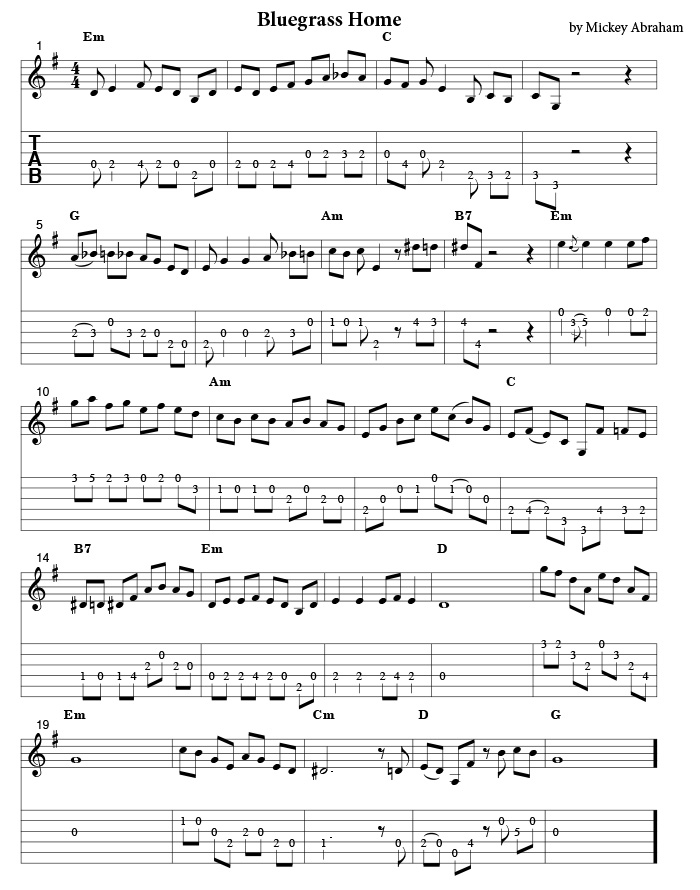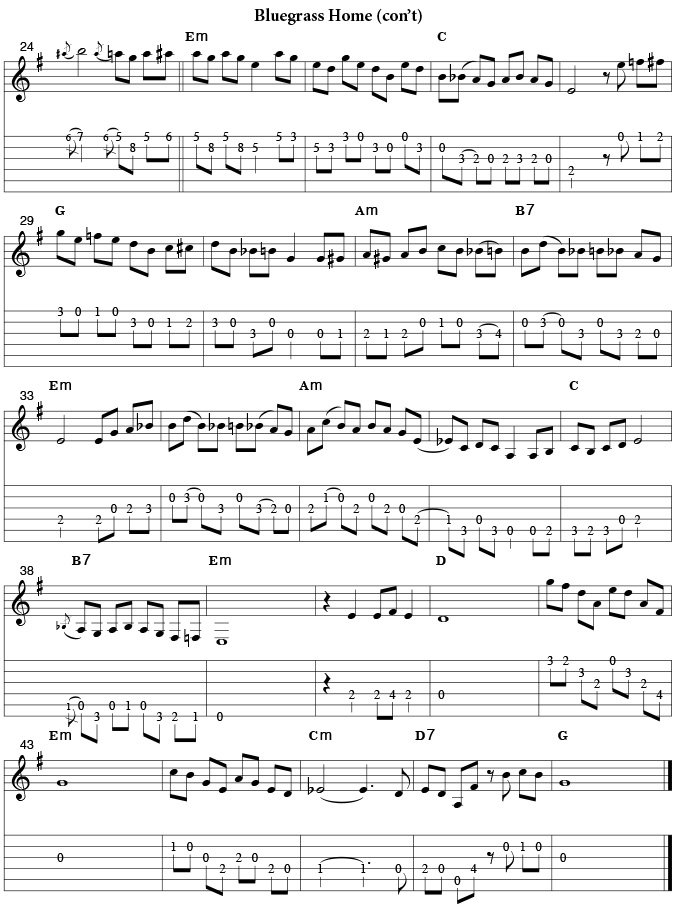|
Flatpicking Guitar Magazine
Monthly Lesson February 2019
"Bluegrass Home"
by Mickey Abraham
Download PDF | Download mp3
Hello and welcome once again to Flatpicking Magazine’s free lesson portion of our monthly newsletter. This month I offer you one of my original flatpicking tunes called “Bluegrass Home.” In eleven years of offering newsletter arrangements this is only the third original tune I have offered. “Bluegrass Home” is a two part tune in E minor. I tried to combine familiar licks and phrases with some surprise moments that add modern interest.
“Bluegrass Home” has a composed melody but is also designed to take bluegrass solos. For the second pass I improvised a break over the chords and then transcribed what I played. In some ways, the hot lick based solo is easier to play than the melody. This is because I composed the melody to what I wanted to hear — which leads to more unusual fingerings. The solo is constructed of various lick-based ideas from Tony Rice, Doc Watson, and other common flatpicking language.
“Bluegrass Home” is influenced by many of my favorite tunes. First, the minor chord progression reminds me of a David Grisman flavored tune. The lick I play over the G chord in measure 5 is one of Grisman’s most common ideas. Next, The bridge to “Bluegrass Home” hints at Bill Monroe tunes like “Southern Flavor.” While these chords are familiar I tried to phrase the melody in an original way. Lastly, the C minor chord used at measure 21 is influenced from “Limehouse Blues.” I just love the way this chord sparkles. Make sure to click on the included lesson mp3 to hear all these ideas in action.
When naming “Bluegrass Home” I was inspired by Kenny Baker tunes such as “Bluegrass in the Backwoods.” Many think of bluegrass music as only using G, C, and D. “Bluegrass in the Backwoods” is a D minor Klezmer sounding tune with five sections…and it’s really hard to play. Kenny Baker was clearly drawing from other bluegrass influences when writing and naming “Bluegrass in the Backwoods.” I enjoy the minor key bluegrass language and I’m intrigued by challenging melodies. While flatpicking arrangements are often simplified, part of the allure is that it can be a challenging style to play. “Bluegrass Home” is a worthy challenge.
I hope you enjoy working on “Bluegrass Home” and jamming it out with your picking buddies. As always should you have any questions or comments on “Bluegrass Home” just drop me a line at [email protected]


|